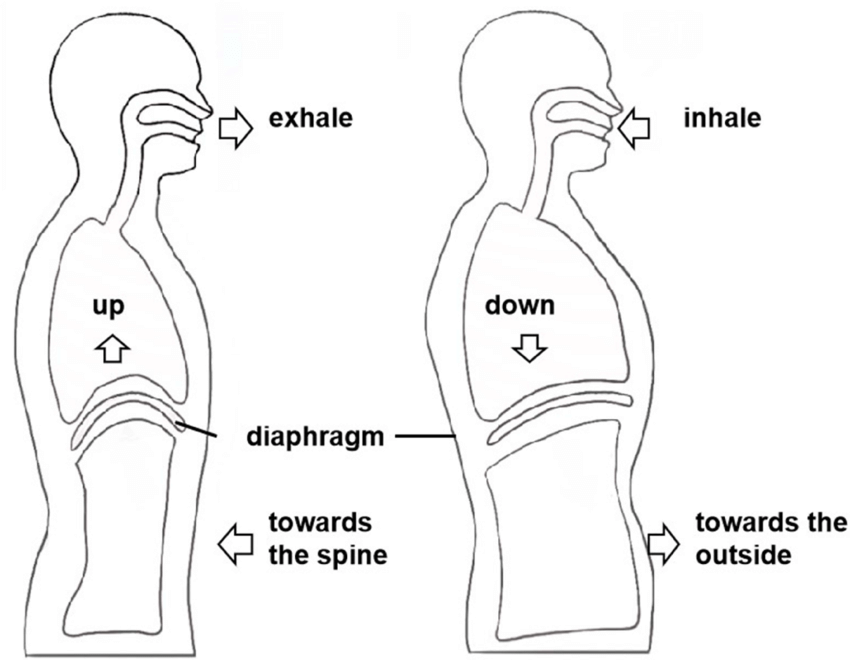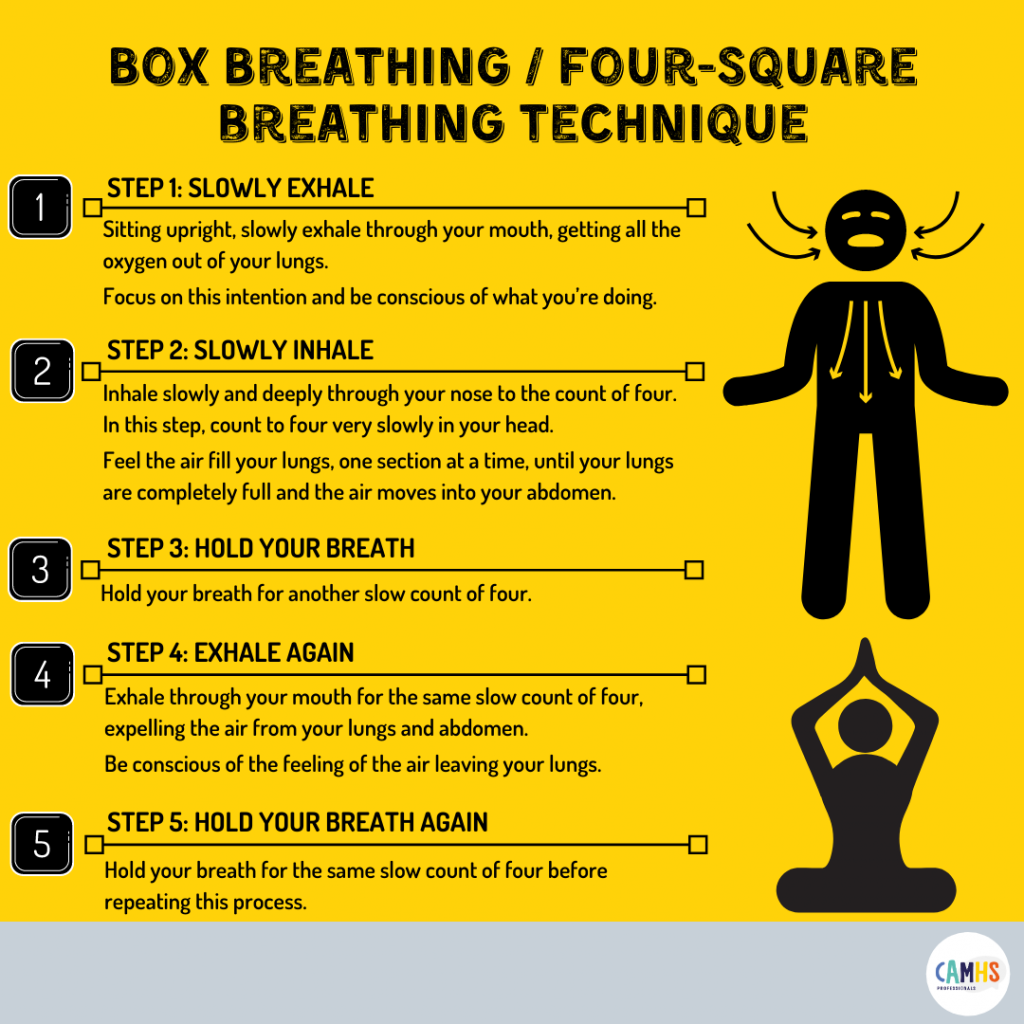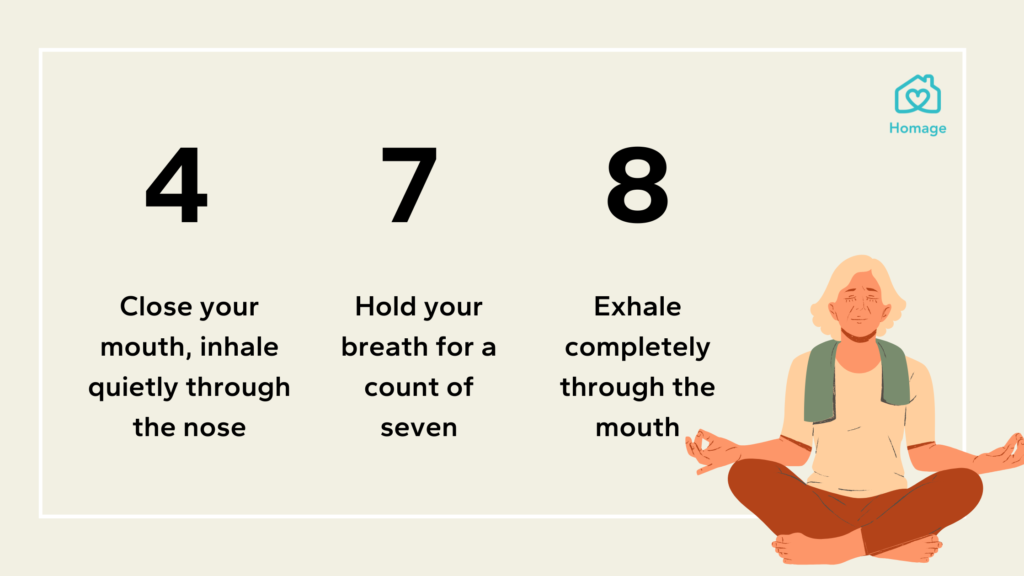Table of Contents
Toggle1.What is Anxiety ?
Here is the informaion about 5 Effective Anxiety Relief Techniques ,Anxiety is a psychological and physical condition characterized by feelings of worry, nervousness, or restlessness. It often arises in response to perceived threats, stress, or challenging situations, whether real or imagined. Anxiety manifests through a range of symptoms, both mental and physical. Mentally, it can include constant anxiety, difficulty concentrating, restlessness, and a sense of impending doom. Physically, symptoms may include increased heart rate, sweating, tremors, shortness of breath, and gastrointestinal problems.
Anxiety is a normal and often adaptive response to stress, which helps individuals prepare for and cope with potential threats. However, when anxiety is excessive or chronic, it can interfere with daily functioning and lead to anxiety disorders, such as generalized anxiety disorder (GAD), panic disorder, social anxiety disorder, and specific phobia.
Is Anxiety is Dangerous for us ?
For 5 Effective Anxiety Relief Techniques ,Anxiety is not inherently dangerous in itself; It is a natural and often necessary response to stress that helps individuals prepare for and respond to potential threats. In moderate amounts, anxiety can be beneficial, motivating people to take action, be alert, and avoid harmful situations. For example, feeling anxious before a big presentation can motivate someone to prepare well.
However, when anxiety is excessive, chronic, or disproportionate to the situation, it can be harmful. Persistent anxiety can interfere with daily life, affecting work, relationships, and overall well-being. Chronic anxiety can lead to physical health problems, such as heart disease, poor immune function, and gastrointestinal disturbances. so 5 Effective Anxiety Relief Techniques can also contribute to mental health disorders, including depression and substance abuse.
5 Effective Anxiety Relief Techniques
Importance of managing anxiety
Anxiety management is important for many reasons, as it affects both mental and physical health, as well as overall quality of life:
-
Improved Mental Health: For 5 Effective Anxiety Relief Techniques Effective management of anxiety can reduce symptoms of anxiety, fear, and nervousness, leading to a more stable and positive mental state. It can prevent the escalation of anxiety into serious mental health problems such as depression and panic disorder.
-
Improved Physical Health: for 5 Effective Anxiety Relief Techniques ,Chronic anxiety has been linked to various physical health problems, such as high blood pressure, heart disease, gastrointestinal problems, and a weakened immune system. Anxiety management can help reduce these physical symptoms and reduce the risk of developing related health conditions.
-
Good Quality of Life: for 5 Effective Anxiety Relief Techniques ,Anxiety can interfere with daily activities, work, and social interactions. By managing anxiety, individuals can improve their ability to function effectively in various aspects of life, enjoy social activities, and maintain productive and fulfilling routines.
-
Improved Relationships:for 5 Effective Anxiety Relief Techniques Anxiety can strain relationships with family, friends, and co-workers due to irritability, withdrawal, or dependency. Managing anxiety can lead to more harmonious and supportive relationships, promoting better communication and connection with others.
-
Enhanced Resilience: for 5 Effective Anxiety Relief Techniques ,Learning to manage anxiety equips individuals with coping strategies and resilience, enabling them to handle stress and adversity more effectively in the future. This flexibility can bring a greater sense of control and confidence in facing life’s challenges.
-
Increased Productivity: for 5 Effective Anxiety Relief Techniques Anxiety can impair concentration, decision-making, and productivity. Effective anxiety management can improve focus, increase performance, and increase efficiency in personal and professional tasks.
Overall, managing anxiety is essential to maintaining a balanced, healthy, and fulfilling life. It allows individuals to navigate daily challenges more effectively, promoting overall well-being and long-term health
2.Breathing Exercises
1. Diaphragmatic Breathing (Belly Breathing)
Diaphragmatic breathing involves taking deep breaths using the diaphragm, a large muscle at the base of the lungs. This type of breathing helps maximize oxygen intake and promote relaxation.##5 Effective Anxiety Relief Techniques
steps:
-
Position: Sit or lie down in a comfortable position.
-
Hand Placement: Place one hand on your chest and the other on your abdomen.
-
Inhale:Inhale deeply through your nose, allowing your abdomen to rise while keeping your chest relatively still.
-
Exhale:Exhale slowly through your mouth, letting your abdomen fall.
-
Repeat:Repeat for 5-10 minutes, focusing on the rise and fall of your abdomen.

Benefits
1.Reduces stress and anxiety
2.Improves lung function
3.Increases relaxation
2. Box Breathing (Square Breathing)
Box breathing is a structured breathing technique that involves equal intervals of inhaling, exhaling, exhaling, and holding the breath again. for 5 Effective Anxiety Relief Techniques It is often used by athletes and military personnel to keep calm under pressure.
Steps:
-
Position: Sit comfortably with your back straight.
-
Inhale: Breathe in through your nose for a count of 4.
-
Hold: Hold your breath for a count of 4.
-
Exhale: Exhale slowly through your mouth for a count of 4.
-
Hold: Hold your breath again for a count of 4.
-
Repeat: Repeat the cycle for several minutes.

Benefits
1.Increases mental clarity and focus
2.Reduces physical stress
3.Helps manage stress and anxiety
3. 4-7-8 Breathing
The 4-7-8 breathing technique, also known as the “relaxing breath,” is designed to calm the nervous system and promote sleep. for 5 Effective Anxiety Relief Techniques It involves inhaling, holding the breath, and exhaling for specific counts.
Steps
-
Position: Sit or lie down in a comfortable position.
-
Inhale: Breathe in quietly through your nose for a count of 4.
-
Hold: Hold your breath for a count of 7.
-
Exhale: Exhale completely through your mouth for a count of 8.
-
Repeat: Repeat the cycle up to four times.

Benefits
- Induces relaxation and aids in falling asleep
- Lowers heart rate
- Reduces anxiety and stress
3.Mindfulness Meditation
Mindfulness meditation is a practice that involves focusing your mind on the present moment in a non-judgmental way. It originates from the Buddhist tradition but has been adapted in various forms to contemporary psychology and wellness practices. for 5 Effective Anxiety Relief Techniques The goal of mindfulness meditation is to increase awareness and acceptance of the present moment, helping individuals develop a greater sense of peace and emotional resilience.
Key Elements of Mindfulness Meditation:
- Focus on the breath: for 5 Effective Anxiety Relief Techniques ,One of the main focuses in mindfulness meditation is the breath. Practitioners often pay a lot of attention to how it feels to inhale and exhale, the rise and fall of the abdomen, or the feeling of air passing through the nostrils.
- Awareness of thoughts and feelings: for 5 Effective Anxiety Relief Techniques Mindfulness meditation involves observing thoughts, feelings, and bodily sensations without attachment or judgment. This practice allows individuals to identify their habitual thought patterns and emotional responses, providing an opportunity to respond to situations with greater awareness and less reactivity.
- Non-judgmental observation: for 5 Effective Anxiety Relief Techniques , A key aspect of mindfulness meditation is observing thoughts, feelings and sensations as they arise without categorizing them as good or bad. This non-judgmental awareness helps individuals develop a more accepting and compassionate attitude towards themselves and their experiences.
- Present Moment Focus: for 5 Effective Anxiety Relief Techniques ,The practice encourages focusing on the present moment, whether it involves observing the breath, sensations in the body, or your surroundings. This focus helps individuals detach from past regrets or future worries and engage fully with the present.
- Regular practice: for 5 Effective Anxiety Relief Techniques ,Mindfulness meditation is usually practiced regularly, with sessions lasting from a few minutes to an hour or more. Consistent practice helps deepen the ability to maintain awareness and cultivate a state of mind throughout daily life.
Benefits of Mindfulness Meditation:
1.Reduces Stress: Mindfulness meditation has been shown to reduce stress and reduce the effects of stress-related thoughts.
2.Improves emotional regulation: By increasing awareness of emotions, mindfulness meditation can help individuals manage their emotional responses more effectively.
3.Increases concentration: Regular exercise can improve focus and concentration, helping people focus on their daily activities.
4.Promotes well-being: Mindfulness meditation can lead to overall well-being by increasing feelings of peace and contentment.
5.Health benefits: Research suggests that mindfulness meditation can also have a variety of health benefits, including improved sleep, reduced symptoms of anxiety and depression, and increased immune function.
3.Physical Exercise
AS 5 Effective Anxiety Relief Techniques,Physical exercise refers to any movement that promotes or maintains physical fitness and overall health. It is an important component of a healthy lifestyle, providing many benefits for both body and mind. Physical exercise can include activities such as walking, running, cycling, swimming, weight lifting and more, and can be structured as part of a fitness program or incorporated into daily routines.
Types of Physical Exercise
- Aerobic Exercise: as 5 Effective Anxiety Relief Techniques Also known as cardiovascular exercise, this type of exercise increases heart rate and breathing rate, improving the efficiency of the cardiovascular system. Examples include running, walking, swimming, cycling and dancing.
- Strength training: This involves exercises designed to improve muscle strength and endurance. This usually involves lifting weights, using resistance bands, or doing bodyweight exercises like push-ups, squats, and lunges.
- Flexibility exercises: These exercises focus on improving the range of motion of muscles and joints. Common activities include stretching, yoga and Pilates.
- Balance and stability exercises: These exercises help improve balance, coordination and stability, often incorporating elements of strength training. Examples include exercises on unstable surfaces, such as balance boards, or movements that challenge balance, such as tai chi.
Benefits of Physical Exercise:
-
Improves Physical Health: Regular physical exercise helps control weight, strengthens the heart, improves circulation, lowers blood pressure, and boosts the immune system.
-
Enhances Mental Health: Exercise is known to reduce symptoms of depression and anxiety, improve mood, and enhance cognitive function.
-
Increases Muscle and Bone Strength: Activities that involve resistance or weight-bearing exercises help to build muscle and increase bone density, which is crucial for overall physical health and preventing osteoporosis.
-
Promotes Weight Management: Physical exercise helps burn calories, which, in combination with a balanced diet, can help maintain a healthy weight or aid in weight loss.
-
Boosts Longevity and Quality of Life: Regular physical activity is associated with a longer life expectancy and a better quality of life by maintaining mobility, independence, and overall well-being.
-
Improves Sleep: Exercise can help regulate sleep patterns, leading to better quality sleep.
-
Enhances Social Interaction: Many forms of exercise, such as team sports, group fitness classes, and recreational activities, provide opportunities for social interaction, which can improve emotional well-being.
4.Mindfulness Meditation
for 5 Effective Anxiety Relief Techniques Mindfulness meditation is a practice that involves focusing on the present moment while calmly acknowledging and acknowledging your feelings, thoughts and bodily sensations. It is rooted in the Buddhist tradition but has gained popularity worldwide due to its many mental and physical health benefits.
Key Components of Mindfulness Meditation
1.focus:
- It focuses on a single object or process, such as the breath, a mantra, or a particular sensation in the body. It helps to anchor the mind and reduce distractions.
2.Open Monitoring:
- After focusing, the practice often involves observing thoughts, feelings, and sensations as they arise without trying to control or judge them. This is often called “non-reactive awareness”.
3.Non-judgment:
- Mindfulness encourages a stance of curiosity and acceptance, where practitioners observe their thoughts and feelings without labeling them as good or bad.
Techniques of Mindfulness Meditation
1.Breath Awareness:
- Focusing on breathing, noticing the sensation of air moving in and out of the nose or the rising and falling of the stomach. When the mind wanders, slowly bring it back to the breath.
2.Body scan:
- Gradually concentrating on different parts of the body, starting from the toes and moving to the head, observing judgment without any sensation.
3Walking Meditation:
- Paying attention to the experience of walking, feeling each step, and being aware of movement and balance.
4Loving Kindness Meditation:
- Cultivating a sense of compassion and kindness towards yourself and others by silently repeating phrases like “May I be happy, may I be healthy” or “May you be happy, may you be healthy”.
Benefits of Mindfulness Meditation
1.Reduces stress:
- Regular exercise can lower levels of the stress hormone cortisol, reducing overall stress.
2.Enhances emotional health:
- Helps reduce symptoms of depression and anxiety, and increases overall emotional well-being.
3.Improves focus and concentration:
- Strengthens the ability to focus on work, increases productivity and performance.
4.Promotes physical health:
- May improve sleep, lower blood pressure, and relieve symptoms of chronic pain.
5.Increases self-awareness:
- Encourages a deeper understanding of oneself, which leads to better self-regulation and decision-making.
5.Progressive Muscle Relaxation
for 5 Effective Anxiety Relief Techniques, Progressive Muscle Relaxation (PMR) is a technique for reducing stress and anxiety by successively tensing and then relaxing different muscle groups in the body. In the early 20th century Dr. It was developed by Edmund Jacobson. The method is based on the premise that muscle tension is a physiological response to stress and anxiety, and by learning to release this tension, an overall stress level can be reduced.
Here’s a step-by-step guide to performing Progressive Muscle Relaxation:
Preparation
Find a quiet place: Choose a quiet, comfortable place where you will not be disturbed.
Comfortable Position: Sit or lie down in a comfortable position. Close your eyes if you feel comfortable doing so.
Breathing: Take a few deep breaths to begin. Inhale slowly through your nose, hold for a moment, and exhale through your mouth.
Finishing Up
Scan your body: After you’ve worked through each muscle group, take a moment to mentally scan your body for any remaining tension. Focus on those areas and try to release any tightness you
find.Take deep breaths: Continue to take slow, deep breaths. Inhale for four counts, hold for four, exhale for four
Return to Awareness: Slowly bring yourawareness back to your surroundings. Curl your fingers and toes, stretch gently, and open your eyes when you’re ready.
Tips for Effective PMR
Consistency: Practice PMR regularly, especially during stressful times.
Environment: Make sure your environment is conducive to relaxation, free from distractions.
Patience: It may take a few sessions to become familiar with this technique and experience its full benefits.
In conclusion, 5 Effective Anxiety Relief Techniques anxiety is a normal and natural response to stress, but when it becomes chronic or overwhelming, it can significantly affect quality of life. Understanding the mechanisms and triggers of anxiety is important in order to manage its effects. Progressive Muscle Relaxation (PMR) is one of the most effective techniques for reducing anxiety by increasing physical relaxation and mental calmness. Regular practice of PMR, along with other methods such as mindfulness,##5 Effective Anxiety Relief Techniques deep breathing exercises, and possibly occupational therapy can help individuals regain control, reduce anxiety symptoms, and improve overall well-being.
For more information
Frequently Asked Questions (FAQs) About Anxiety
1. What is anxiety?
Anxiety is a natural response to stress, characterized by feelings of worry, nervousness, or fear. While experiencing occasional anxiety is normal, chronic or acute anxiety may indicate an anxiety disorder.
2. What are common symptoms of anxiety?
Symptoms of anxiety can vary but often include:
– Excessive anxiety
– Restlessness
– Irritability
– Difficulty concentrating
– Muscle tension
– Fast heartbeat
– Shortness of breath
– Sweating
– Fatigue
– Sleep disturbance
3. What causes anxiety?
Anxiety can be caused by a combination of factors, including:
– Genetics
– Brain chemistry
– Personality traits
– Life experiences (eg, trauma, stress)
– Medical condition
4. How is anxiety diagnosed?
A healthcare provider can diagnose anxiety through a comprehensive assessment, which may include:
– Detailed medical and psychological history
– Physical examination
– Diagnostic questionnaire or assessment
5. What are some common types of anxiety disorders?
Common types of anxiety disorders include:
– Generalized Anxiety Disorder (GAD)
– Panic disorder
– Social anxiety disorder
– Specific phobias
– Obsessive-compulsive disorder (OCD)
– Post Traumatic Stress Disorder (PTSD)
6. How can anxiety be treated?
Anxiety can be treated through a variety of approaches, including:
– Therapy: Cognitive behavioral therapy (CBT), exposure therapy, and other forms of counseling.
– Medication: Antidepressants, anti-anxiety medications, and beta-blockers.
– Lifestyle Changes: Regular exercise, healthy diet, adequate sleep, and stress management techniques.##5 Effective Anxiety Relief Techniques
– Self-help strategies: mindfulness, meditation, deep breathing exercises, and progressive muscle relaxation (PMR).
7. Can anxiety go away on its own?
Mild anxiety can resolve without treatment, especially if triggered by a specific event. However, chronic or severe anxiety often requires intervention to be effectively managed.
8. Is anxiety the same as stress?
While anxiety and stress are related, they are not the same. Stress is a response to external pressures or threats, while anxiety is a response to stress, even in the absence of specific stressors such as worry and fear.
9. Can Lifestyle Changes Help Manage Anxiety?
Yes, lifestyle changes such as regular physical activity, a balanced diet, adequate sleep, and effective stress management techniques can help reduce anxiety symptoms.
10. When should I seek professional help for anxiety?
Seek professional help if:
– Anxiety interferes with daily life and functioning
– Symptoms persist for a long time
– Self-help strategies are ineffective
– You experience panic attacks or intense, uncontrollable fear
11. Are there support groups for anxiety?
Yes, many communities and online platforms offer support groups where people can share experiences, get support, and learn coping strategies from others dealing with similar issues.
12. Can anxiety disorders be cured?
While anxiety disorders may not be “cured” in the traditional sense, they can be effectively managed with treatment, allowing individuals to lead fulfilling lives.
for 5 Effective Anxiety Relief Techniques Understanding anxiety and its management can empower people to seek appropriate help and adopt strategies to reduce its impact on their lives. If you have concerns about anxiety, consult a healthcare professional for personalized advice and treatment options.

